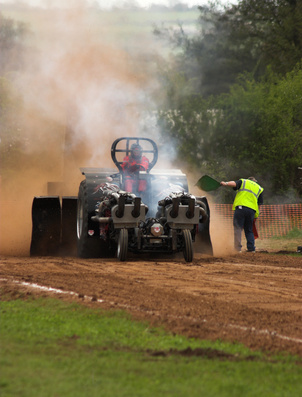
An automatic transmission refers to a type of vehicle transmission that changes gear ratios automatically as the vehicle moves. The Powerglide transmission, developed by General Motors, refers to a type of two-speed automatic transmission.
Powerglide transmissions operate one gear at a time or have a one-to-one gear ratio. These gearings are arranged in sets. Switching gears enables a wide range of vehicle speeds, depending upon the acceleration or deceleration of the engine, which is detected by the transmission via the crankshaft. A torque converter, or coupling that sends rotating power from the engine to a rotating load, controls the connection between the engine and transmission gearings. The torque converter increases torque based on the difference between outputted and inputted speed, allowing it to act as a reduction gear.
Powerglide transmissions are relatively lightweight, making them an ideal component in racing applications. Powerglide transmissions also possess a low-rotating mass, enabling a greater amount of horsepower to reach the wheels.
Powerglide transmissions, although no longer a mainstream due to the limitations of a two-speed transmission over a three-speed, are still currently used in drag racing. Powerglide transmissions in such applications are commonly referred to as "positive-pop transmissions" due to the popping noise that occurs as the gear shifts out of neutral.